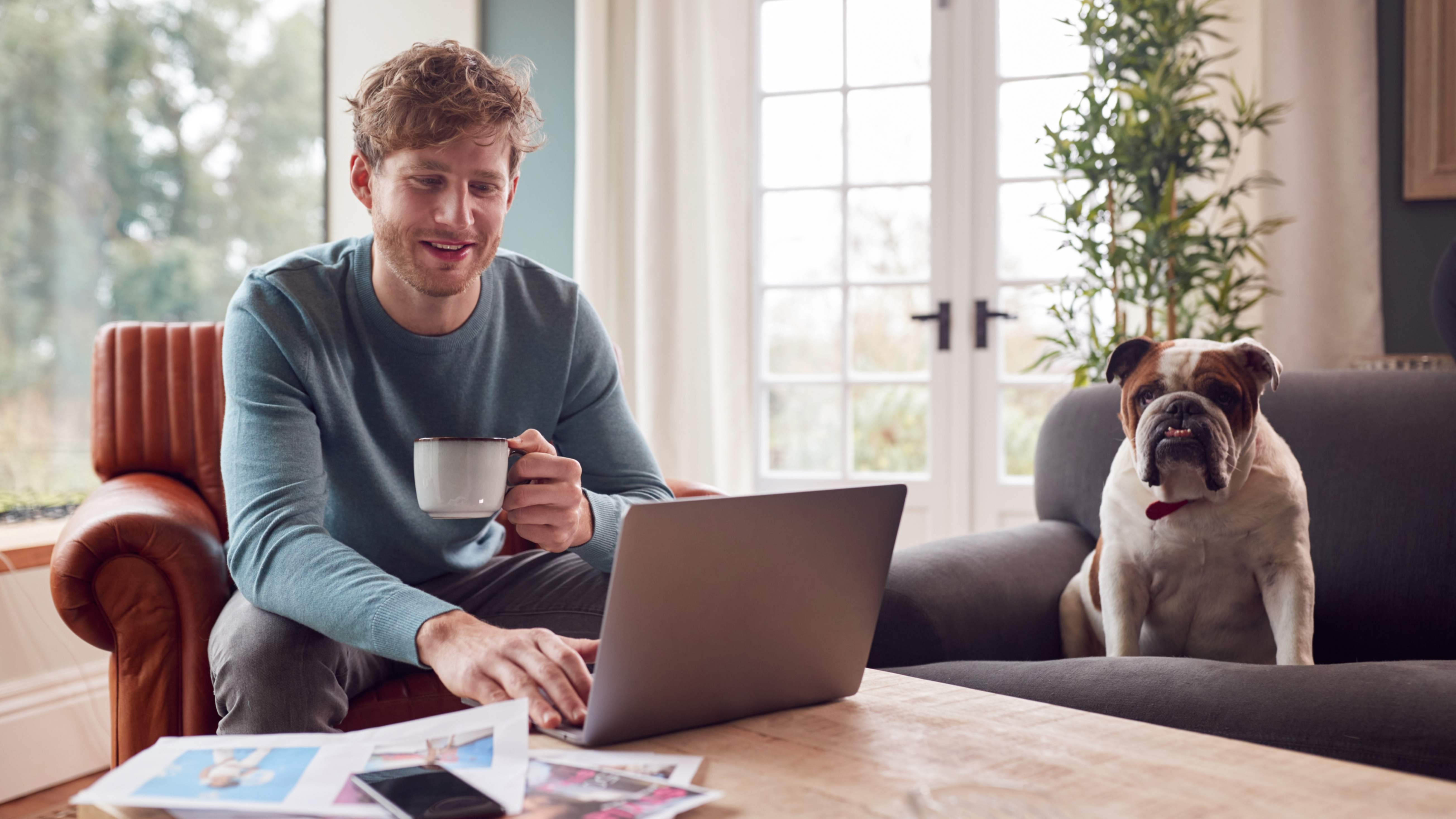
Remote working is something that more of us have been doing in recent years – particularly since the pandemic – meaning that we’ve been spending more time at home.
As a result, we’ve been able to enjoy more time with our pets, maybe playing with the best dog toys in our breaks or enjoying some slightly longer walks.
However, Nick Jones, a dog training and behavior expert, claims that working from home can lead to separation anxiety and behavioral issues in our pups, unless we take steps to help them. He’s partnered with ACME Whistles to offer five key tips to dog parents, so let’s take a closer look.
1. Make gradual separation trips: “Leave your dog for short periods and gradually increase the duration of the separations over days, weeks, and months,” Jones says. Use positive distractions, like enrichment toys or toys that you can fill with food or treats, to help them create positive associations with being left at home.
2. Introduce new people to your pup: Get friends and relatives involved in caring for your dog – if they want to! This way, your dog can bond with other people, and might not rely on your presence quite as much. The more people your pup socializes with, the more relaxed and confident they’ll likely be.
3. Prevent shadowing behaviors: “Do not allow your dog to follow you around the house and incorporate regular breaks in the workday when you are away from each other and in different rooms,” Jones advises. After all, there will probably be times when you have important work meetings, and it wouldn’t be ideal for your dog to be right by your side.
4. Use long-lasting chews and toys: Jones recommends keeping a stash of the best long lasting dog chews on hand, a stuffed Kong, or something similar to provide plenty of solo enrichment. It’ll make your life a lot easier if your dog is able to amuse themselves while you’re busy working – here’s more advice on how to keep your dog entertained while at work.
5. Work on calm greetings: “An effective way to reduce separation anxiety is by ensuring calm homecomings and greetings,” says Jones. “When you return to your dog after a time, avoid making a fuss or showering your dog with immediate attention. Instead, return quietly and go about your routine for a few minutes before acknowledging your dog.”
This will help your dog understand that your return isn’t a hugely exciting event, and this is likely to lower their anxiety when you’re away. “By keeping returns low-key, you reinforce a sense of calm and stability, which is essential for managing separation anxiety,” Jones continues.
If you don’t have a dog right now, but you’re considering it, and you work from home, here are the 16 best dog breeds for remote workers. Just remember to keep Jones’ tips in mind when your new pup does arrive!




!["[T]he First and Fifth Amendments Require ICE to Provide Information About the Whereabouts of a Detained Person"](https://images.inkl.com/s3/publisher/cover/212/reason-cover.png?w=600)


